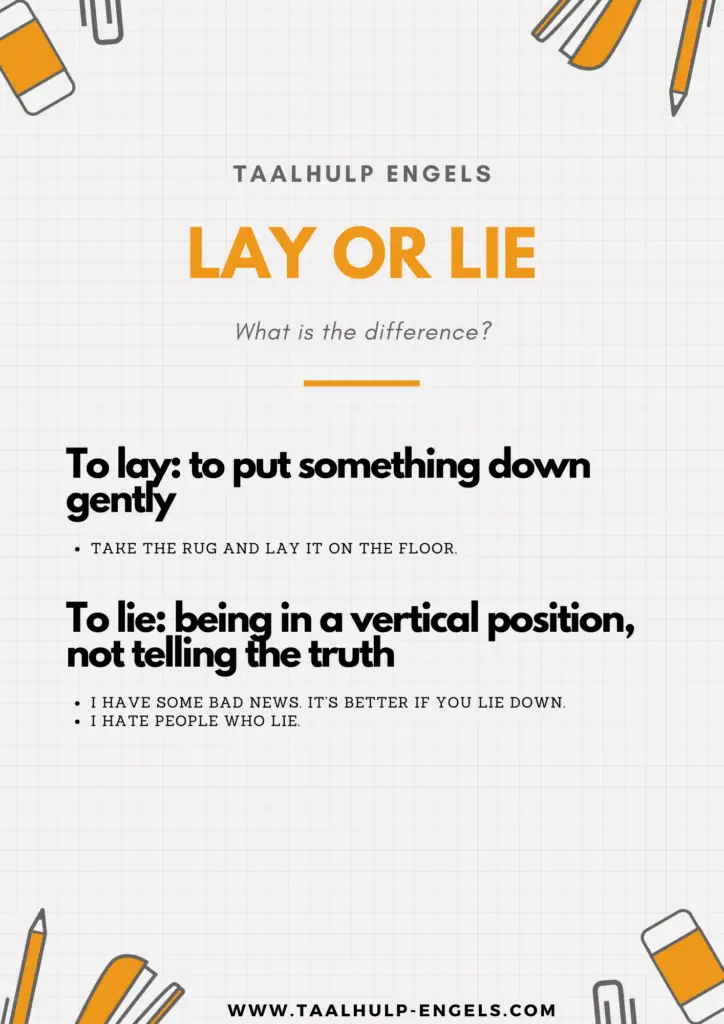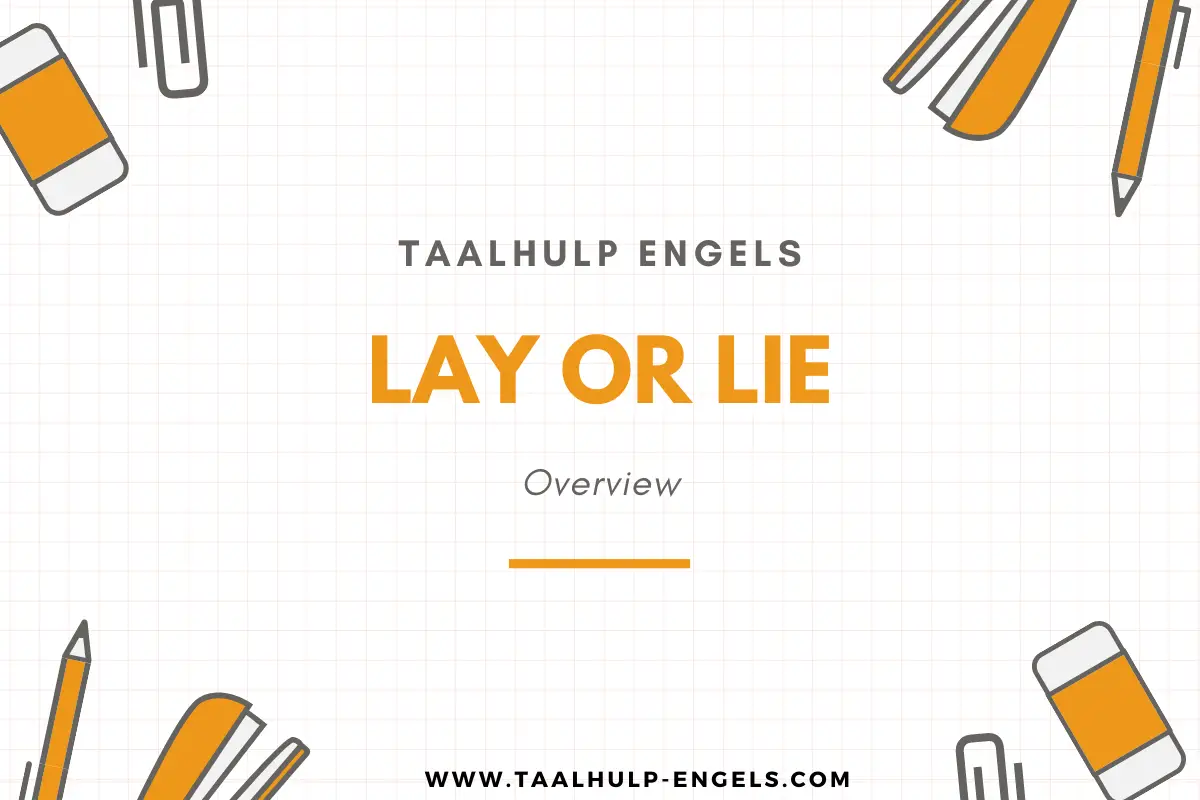One of the most common mistakes in English is when people use lay and lie in the wrong context. Some forms of these verbs are similar, which makes it even more complicated. You have a clear overview of the differences below.
Lay or lie
These words have similar meanings and forms, but you still need to use them in a different context.
An extra difficulty is that ‘to lie’ has more than one meaning. This means that you need to pay even more attention when you want to use one of these verbs. It’s important that you know the context in which you need to use the verb. You have an overview of the difference in meaning below:
| Word | Meaning | Example |
|---|---|---|
| to lay | to put something down gently | Take the rug and lay it on the floor. |
| to lie | to be in a vertical position (to rest) not telling the truth | I have some bad news. It’s better if you lie down. I hate people who lie. |


To lay is used when you are talking about the action when you put down something in a gentle way. It’s to describe what the subject is doing with the object.
- Please lay the blanket on the couch.
- He hates it when I lay my cold feet in his lap.
To lie is used when you want to describe the static and vertical position you are in when you are resting, for example. You can also use this verb when you want to describe the action of not telling the truth.
- I just want to lie in bed.
- My sister always lies on a towel when she’s at the beach.
Conjugation of ‘to lay’
Present simple
| I lay |
| You lay |
| He/she/it lays |
| We lay |
| You lay |
| They lay |
Past simple
| I laid |
| You laid |
| He/she/it laid |
| We laid |
| You laid |
| They laid |
Ing-form of ‘to lay‘: laying
Conjugation of ‘to lie’ (being in a vertical position)
Present simple
| I lie |
| You lie |
| He/she/it lies |
| We lie |
| You lie |
| They lie |
Past simple
| I lay |
| You lay |
| He/she/it lay |
| We lay |
| You lay |
| They lay |
Ing-form of ‘to lie’: lying


Exercises
- Lay or Lie Exercise 1
- Lay or Lie Exercise 2
- Lay or Lie Exercise 3
- Lay or Lie Exercise 4
- Lay or Lie Exercise 5


